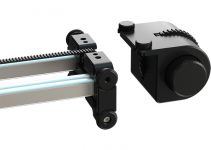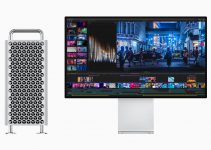Over the past few years Canon and Sony have let us down on the video side, and have allowed Panasonic and Fuji to take the lead for DSLR video. But all of that changed when the two companies released their latest offerings, the Canon EOS R5 and the Sony A7SIII.
These are two of the most anticipated cameras to date after years of waiting and all sorts of rumors floating around the internet. Now we finally get to see them side-by-side and for once the rumors really didn’t disappoint. Both companies stepped up their game considerably and pushed some very stunning technological advancements into the hands of shooters who are always eager for more.
Dan Watson put these two cameras side by side in a showdown to determine which could be the winner for you.
Sony A7SIII Key Features
- 12MP Full-Frame Exmor R BSI CMOS Sensor
- UHD 4K 120p Video, 10-Bit 4:2:2 Internal
- 16-Bit Raw Output, HLG & S-Log3 Gammas
- 759-Point Fast Hybrid AF
- 9.44m-Dot QXGA OLED EVF
- 3.0″ 1.44m-Dot Vari-Angle Touchscreen
- 5-Axis SteadyShot Image Stabilization
- Extended ISO 40-409600, 10 fps Shooting
- Dual CFexpress Type A/SD Card Slots
- Price: $3,498
Canon EOS R5 Key Features
- 45MP Full-Frame CMOS Sensor
- DIGIC X Image Processor
- 8K30 Raw and 4K120 10-Bit Internal Video
- Sensor-Shift 5-Axis Image Stabilization
- 12 fps Mech. Shutter, 20 fps E. Shutter
- Dual Pixel CMOS AF II with 1053 Points
- 0.5″ 5.76m-Dot OLED EVF
- 3.2″ Vari-Angle Touchscreen LCD
- Subject Tracking with Deep Learning
- CFexpress & SD UHS-II Memory Card Slots
- Price: $3,899
Right off the bat, Canon has the edge on video resolution with the fantastic 8K raw recording in the R5. It also has two 4k mode with 4k full frame and 4k crop to S35 to compete against the A7SIII. But at least Sony’s camera doesn’t overheat, right? *Keep reading.
Canon R5 can only record without overheating while using LQ mode which uses pixel bining, create some blocking and moire issues.
While Canon has a higher bit rate, Sony allows you to choose from 8-bit, 10-bit, and 4:2:2, 4:2:0 in every frame rate. Canon only lets you shoot in 10-bit when filming in C-LOG.
The Sony A7SIII wins slightly in image detail at 4k120 over the R5 since the R5 can’t use the oversampled 8K image at higher frame rates. They’re still very close, and it’s impressive that any DSLR can shoot 120fps in 4K and have it look this nice.
Low Light
There are no surprises here. Sony’s A7S line has been well known to be the king of lowlight photography for many years now, and the A7SIII does not disappoint.
The larger photosites on the A7SIII give it a significant lead over the Canon R5 in this area. Canon’s R5 isn’t very useable beyond 6400ISO, left completely in the dust by Sony’s A7SIII – which is useable all the way up to 50,000ISO.
Image Detail
You would think that shooting 8K on the R5 would offer a great advantage but according to Dan, “You barely tell the difference unless you’re zooming in to 200% (or) 300%”.
The image that the Sony A7SIII is able to resolve is so clean that side by side with Canon’s 4K it isn’t a noticeable difference on a 4K monitor.
In addition to that, Sony’s clear image zoom (the A7SII’s answer to APS-C crop) holds it’s own against Canon. Although it’s a digital zoom, it’s comparable to the clarity you’ll see from the R5.
It will always be an issue evaluating a difference here since (I’m betting) none of us have a 8K monitor with which to view the R5’s video footage in full resolution.
RAW Video
The Canon R5 and the Sony A7SIII both shoot raw video with the advantage on Canon, which has raw recording internally. With the A7SIII you have to record raw externally to something like an Atomos but as a bonus the Sony can shoot 4K 60p in raw and the R5 is limited to only 8K up to 30p.
Unfortunately, we are not given any samples to evaluate. The A7SIII outputs 16-bit raw via HDMI, but the Atomos is only capable of recording 12-bit Raw, which means some additional processing is being done to eliminate all of that extra color information. This could impact the quality in some way, but probably not in a noticeable way since most of us don’t even have true 10 bit screens.
IBIS
The EOS R5 is Canon’s first camera to incorporate IBIS and this is a massive leap technologically. Comparing to the A7SIII, the R5 blows it completely out of the water. The tests look like Sony doesn’t have IBIS at all, and it almost looks as if the IBIS is actually making the image even worse.
Sony is well known to have a weak IBIS system, and with the A7SIII they attempted to compensate with a new Active Mode that does a pretty good job smoothing things out. But the R5 has IBIS, Electronic Stabilization, and Lens IS to counteract any bumps and these test prove how superior Canon’s IBIS system really is at keeping things steady.
Rolling Shutter
Rolling shutters are always and expected issue on full-frame cameras, and you would expect to see serious issues with Canon’s sensor since it has so many pixels, but no!
Sony has made some improvements to their rolling shutter readout, but Canon takes the cake here. Line skewing is definitely present, but nothing like what we’re seeing in the A7SIII.
Media
Canon chose CFexpress Type B, and Sony picked CFexpress Type A the latter of which isn’t currently available in any capacity above 160Gigs, so you’ll be swapping cards pretty frequently on the higher settings. There are currently plenty of large-capacity drives out that work well with the R5, but 8K raw is sure to fill any card up quickly.
Overheating
In overheating tests things take a surprise turn when Dan pits the A7SIII, the R5, Panasonic S1H, and the Fuji T3 all against one another in the hot Florida sun. The overheating issue with the R5 will really depend on your shooting environment, and Canon has been pretty honest and upfront with everyone about this limitation.
Inside in the AC, Dan gets exactly what you expect 20 minutes or so out of the R5 and no overheating issues with the A7SIII. Outside on the other hand, it’s the Sony that can’t keep up with the Canon. After 23 minutes of recording, the A7SIII gives up and shuts down while the R5 keeps on going for another 2 minutes.Ok, so it isn’t much of a victory, but a lot can happen in 2 minutes.
Conclusion
It’s a really tough call if you’re trying to decide which of these two fantastic cameras is right for you and your business. The low-light on the A7SIII really makes it an obvious choice if you are on the go, or shoot lots of events. But on the other hand, the Canon R5 has fantastic IBIS and an outstanding dual-pixel autofocus system.
With so many cameras hitting the market these days, it gets harder and harder to decide which one is right for you and what you do. There is no one perfect camera. Every camera you see will have its own set of positives and negatives, so maybe in this case you should just get both?
[source: Dan Watson]
Order Links:
- Sony Alpha a7S III Mirrorless Camera (B&H, Amazon)
- Canon EOS R5 Mirrorless Digital Camera (B&H, Amazon)
Disclaimer: As an Amazon Associate partner and participant in B&H and Adorama Affiliate programmes, we earn a small comission from each purchase made through the affiliate links listed above at no additional cost to you.



